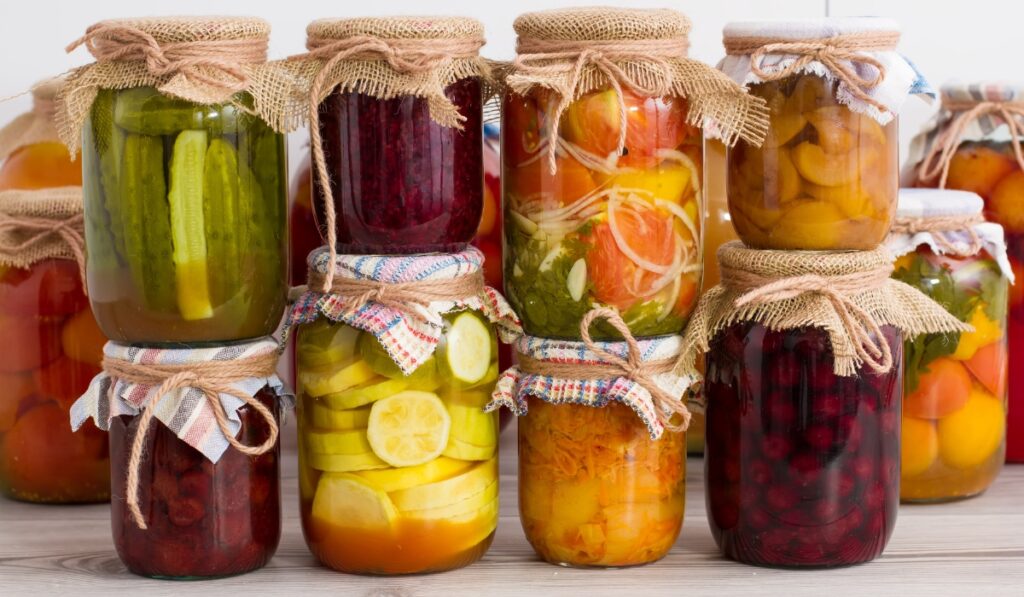Posts Tagged DK Landscaping
Reclaim Your Weekends: Smart, Low Maintenance Landscaping Strategies
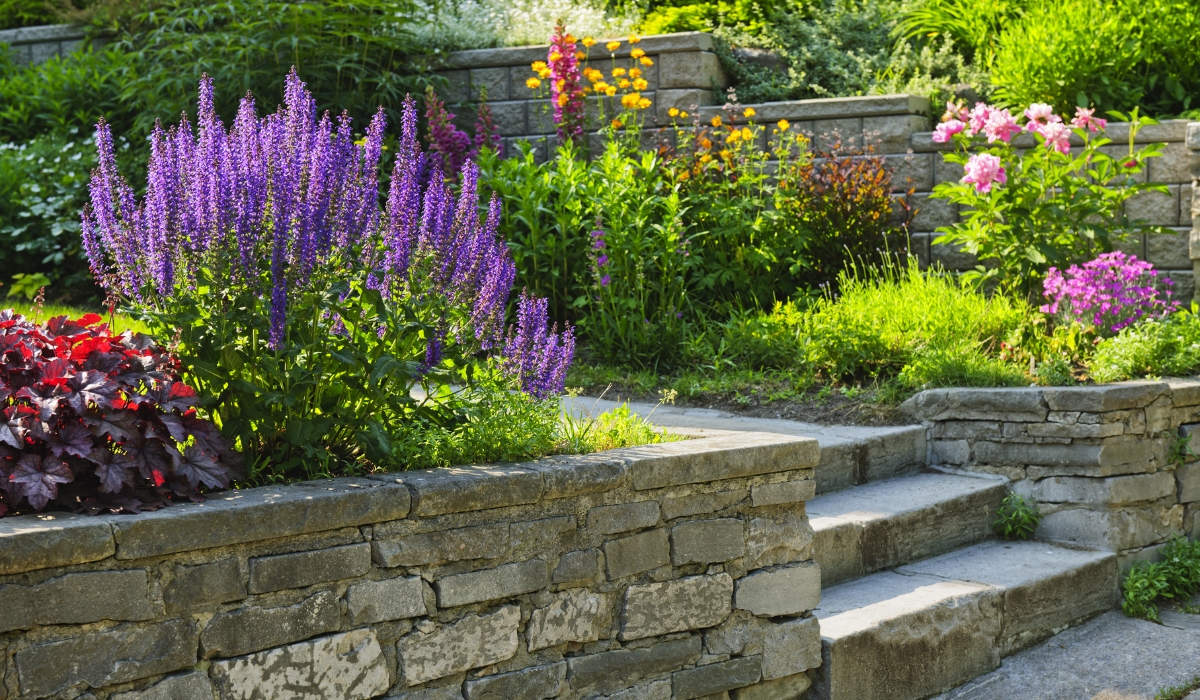
Does the thought of Saturday morning mean firing up the lawnmower instead of sipping coffee on the patio? Do visions of endless weeding, watering, and pruning haunt your Sunday afternoons? For many homeowners, the dream of a beautiful yard quickly becomes a reality of demanding, time-consuming chores.
At DK Landscaping, we believe your outdoor space should be a source of relaxation and enjoyment, not a drain on your precious free time. The good news is that a stunning, vibrant landscape doesn’t have to chain you to constant upkeep. By implementing smart, low-maintenance landscaping strategies, you can significantly cut down on yard work and reclaim your weekends.
Here are some key strategies we recommend:
1. Choose Your Plants Wisely
This is perhaps the single most impactful step. Opting for the right plants for our specific climate and your yard’s conditions (sun/shade, soil type) is crucial.
- Native Plants: These are naturally adapted to our local environment, meaning they generally require less water, fertilizer, and pest control once established.
- Drought-Tolerant Species: Reduce your watering duties significantly by selecting plants that thrive with less moisture. Think succulents, ornamental grasses, and specific perennials known for their resilience.
- Slow-Growing Shrubs & Perennials: Minimize pruning tasks by choosing varieties that maintain their shape and size without constant trimming.
2. Mulch is Your Best Friend
Never underestimate the power of a good layer of mulch! Applying a 2-3 inch layer of organic (like bark chips or shredded hardwood) or inorganic (like gravel or pebbles) mulch offers multiple benefits:
- Suppresses Weeds: Significantly reduces the space and light available for weeds to germinate.
- Retains Soil Moisture: Less evaporation means less frequent watering.
- Regulates Soil Temperature: Protects roots from extreme heat and cold.
- Improves Soil Health (Organic Mulch): Breaks down over time, adding valuable nutrients to the soil.
3. Embrace Hardscaping
Hardscaping refers to the non-living elements of your landscape – patios, walkways, retaining walls, decks, and decorative rock features. Strategically incorporating hardscaping can drastically reduce high-maintenance areas.
- Reduce Lawn Size: Replacing sections of grass with a beautiful patio, extended walkway, or gravel garden bed instantly cuts down on mowing, fertilizing, and watering.
- Define Spaces: Well-placed paths and patios create functional, attractive zones that require minimal upkeep compared to planted beds or lawns.
4. Rethink the Traditional Lawn
While a lush green lawn is appealing, it’s often the most maintenance-intensive part of a yard. Consider these options:
- Shrink It: If you don’t need a vast expanse of grass, reduce its footprint in favor of planting beds or hardscaping.
- Choose Tougher Grass: Select grass varieties known for drought tolerance and slower growth rates suitable for our region.
- Explore Lawn Alternatives: Groundcovers like creeping thyme or sedum, or even clover lawns, can offer green coverage with less mowing and watering.
5. Water Smarter, Not Harder
Efficient watering saves time, conserves water, and promotes healthier plants.
- Drip Irrigation & Soaker Hoses: Deliver water directly to the root zone, minimizing evaporation and runoff. Ideal for garden beds and shrubs.
- Smart Controllers: Invest in sprinkler timers that adjust based on weather forecasts, preventing unnecessary watering.
- Group Plants by Water Needs: Place thirsty plants together and drought-tolerant ones together (hydrozoning) to water more effectively.
Your Weekend Freedom Awaits
Implementing these low-maintenance strategies doesn’t mean sacrificing beauty. In fact, a well-designed, low-care landscape often looks more natural, established, and effortlessly appealing. Imagine spending your weekends relaxing, entertaining, or pursuing hobbies, knowing your yard looks great without demanding all your time.
Ready to trade hours of yard work for more moments of enjoyment? The team at DK Landscaping specializes in creating beautiful, sustainable, and low-maintenance landscapes tailored to your lifestyle. Contact us today for a consultation, and let’s design an outdoor space you can truly live in!
Pruning Perfection: DK’s Guide to Maintaining Healthy Plants
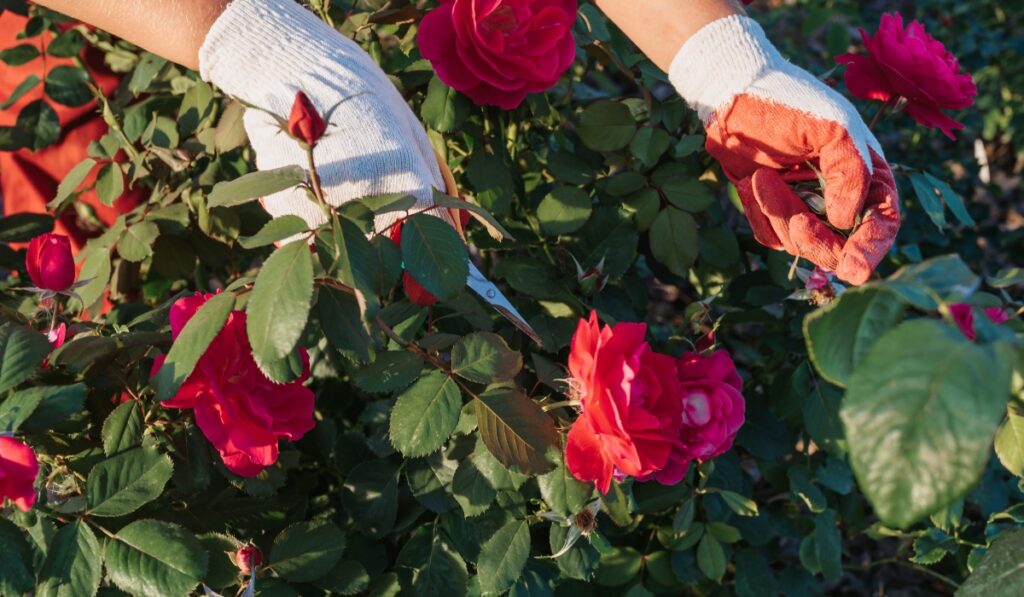
Pruning might seem like giving your plants a haircut, but it’s much more than just a cosmetic touch-up. It’s an essential practice for maintaining the health, vigor, and beauty of your garden. By strategically removing certain parts of a plant, you encourage healthy growth, remove dead or diseased branches, improve its overall shape and appearance, and even increase flower and fruit production. Think of it as a way to guide your plants towards their full potential!
Tools of the Trade
Before you start snipping away, it’s important to have the right tools for the job. Here are the essentials:
- Hand pruners: These are your go-to for smaller branches and stems.
- Loppers: Perfect for tackling larger branches that hand pruners can’t handle.
- Pruning saw: This comes in handy for thick branches or when you need to make more precise cuts.
Remember, using sharp, clean tools is crucial to prevent the spread of diseases. Think of it like surgery for your plants – you want to be as precise and hygienic as possible!
General Pruning Techniques
Pruning isn’t just about randomly chopping off branches. There’s a bit of an art to it! Here are some general principles to keep in mind:
- Make clean cuts: Avoid tearing or crushing the branches.
- Cut just above a bud or node: This encourages new growth in the desired direction.
- Avoid flush cuts: Don’t cut flush with the trunk or main branch, as this can damage the plant.
There are two main pruning techniques:
- Heading back: This involves cutting back to a bud to encourage bushier growth.
- Thinning out: This involves removing entire branches to improve air circulation and light penetration.
When it comes to timing, most plants benefit from pruning during their dormant season, typically in late winter or early spring. However, there are exceptions, so it’s always best to research the specific needs of your plants.
Pruning Specific Plant Types
Now, let’s dive into some specific plant types:
Roses
Pruning roses is essential for promoting those beautiful blooms we all love. Different types of roses have slightly different pruning needs. For example, hybrid tea roses generally require more vigorous pruning than floribundas. When pruning roses, aim to remove any dead, diseased, or crossing branches. Cut back the remaining canes to encourage new growth and shape the plant. The best time to prune roses in California is typically in January or February.
Ornamental Grasses
Ornamental grasses add a lovely texture and movement to any garden. Pruning them helps to remove dead foliage, maintain their shape, and encourage fresh new growth. You can generally cut back ornamental grasses with shears or comb out dead foliage with your hands. The ideal time to prune most ornamental grasses is in late winter or early spring, before new growth emerges.
Common Pruning Mistakes to Avoid
Even with the best intentions, it’s easy to make mistakes when pruning. Here are some common pitfalls to avoid:
- Pruning at the wrong time: This can stress the plant and reduce flowering.
- Over-pruning: Removing too much can weaken the plant and make it more susceptible to diseases.
- Making improper cuts: This can damage the plant and hinder its growth.
DK Landscaping: Your Pruning Experts
Pruning can seem daunting, but it doesn’t have to be! At DK Landscaping, our team of experts has the knowledge and experience to handle all your pruning needs. We understand the unique requirements of different plant types and can help you achieve a healthy and beautiful garden.
Ready to give your plants the expert care they deserve? Contact DK Landscaping today for all your pruning and garden maintenance needs! We’ll help you achieve Pruning Perfection!
Dog-Friendly Landscaping with DK: Creating a Backyard Oasis for You and Your Furry Friend
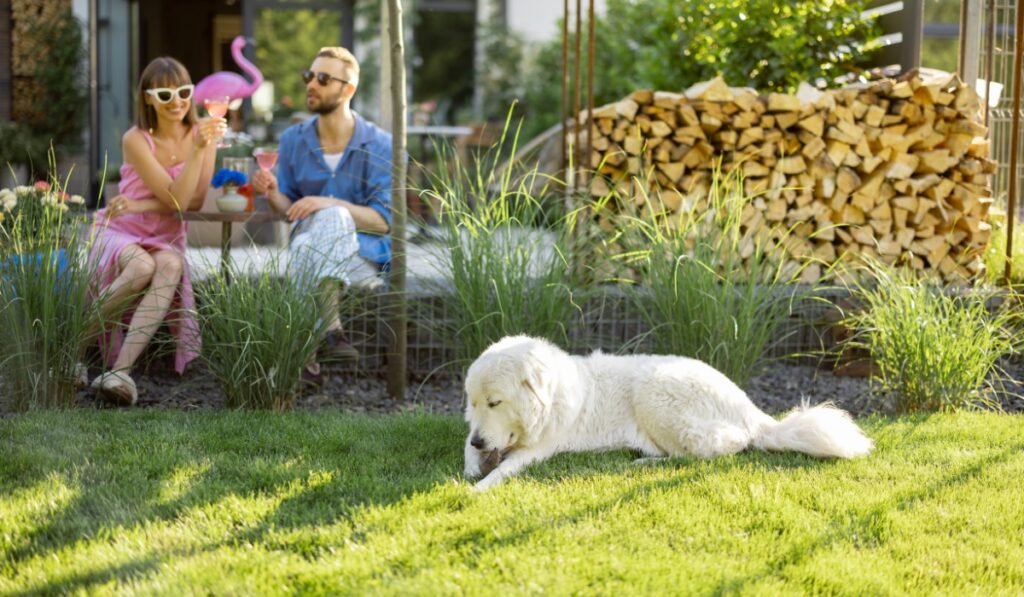
Your backyard is an extension of your home, a place for relaxation, fun, and connection. And for many of us, that means sharing the space with our beloved canine companions! At DK Landscaping, we understand that your dog is part of the family, and we believe they deserve a backyard that caters to their needs as much as it does to yours. Creating a dog-friendly landscape involves careful consideration of plants, hardscaping, and design elements to ensure a safe and enjoyable environment for everyone.
Plant Selection: A Garden That’s Safe and Stunning
While a lush garden bursting with colorful blooms might be your dream, it’s important to remember that many common plants pose a serious threat to dogs. Azaleas, rhododendrons, and oleander, for example, contain toxins that can cause a range of health problems if ingested. Even seemingly harmless plants like sago palms can be extremely dangerous, potentially leading to liver failure.
But don’t despair! There’s a wide variety of beautiful and dog-safe alternatives to choose from. Fragrant herbs like rosemary and lavender not only add a lovely sensory dimension to your garden but are also perfectly safe for curious sniffs and accidental nibbles. Sunflowers bring a cheerful burst of color, while ferns offer lush texture and a touch of the wild. Remember, it’s always a good idea to research any plant before adding it to your yard. The ASPCA website is a fantastic resource for identifying toxic and non-toxic plants.
Hardscaping for Happy Paws: Building a Foundation for Fun
Hardscaping plays a crucial role in creating a dog-friendly backyard. Well-defined pathways made from materials like flagstone, decomposed granite, or mulch not only add visual appeal but also help prevent your dog from trampling delicate plants. A sturdy fence is essential for keeping your furry friend safe and contained within your property. Be sure to choose a material and height that discourage climbing and digging. If your dog loves to play, consider designating a specific area with durable surfacing like artificial turf or pea gravel. This provides a comfortable space for fetch, zoomies, and all those other canine antics, while protecting your lawn from excessive wear and tear.
Design Elements for Canine Comfort: Creating a Relaxing Retreat
Beyond plants and hardscaping, thoughtful design choices can further enhance your dog’s enjoyment of the backyard. California summers can be brutal, so providing ample shade with trees, shrubs, or a covered patio is essential. A dog house or other sheltered area offers a welcome retreat from the elements. On those hot days, a shallow water feature like a small pond or fountain provides a refreshing spot for your dog to cool down and have some fun. And if your dog is a digger (and let’s face it, many are!), consider creating a designated digging zone filled with loose soil or sand. This can help redirect their digging instincts away from your prized flowerbeds.
DK Landscaping: Your Partner in Dog-Friendly Design
Creating a backyard oasis for both you and your furry friend requires careful planning and consideration. At DK Landscaping, our team of experienced professionals can help you navigate the choices and create a landscape that’s both beautiful and functional. We’ll help you select the right plants, hardscaping materials, and design elements to ensure a safe and enjoyable space for everyone.
Ready to create a backyard where both you and your dog can thrive? Contact DK Landscaping today for a consultation. We’ll work with you to design a space that meets your needs and exceeds your expectations!
Fall Landscaping Prep: Preparing Your California Yard for the Changing Season
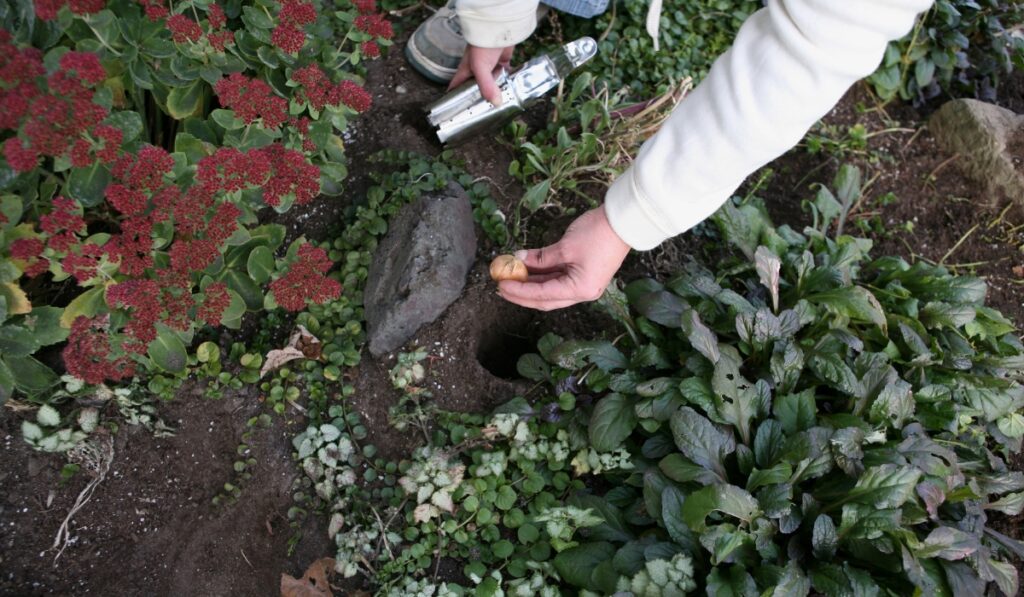
As the summer sun begins to soften and the days grow shorter, it’s time to shift our focus to fall landscaping preparation. At DK Landscaping, we understand the importance of transitioning your yard smoothly into the cooler months, ensuring a healthy and beautiful landscape that thrives through winter and bursts with life come spring.
Cleaning Up Summer Debris
The first step in fall landscaping prep is a thorough cleanup. Remove any fallen leaves, spent flowers, and debris from your yard. This not only tidies up the space but also helps prevent pests and diseases from overwintering. Pay close attention to areas around trees and shrubs, where fallen leaves can accumulate and create a damp environment that encourages fungal growth.
Preparing Soil for Fall Planting
Fall is the perfect time to revitalize your soil and prepare it for new plantings. Incorporate organic matter like compost or well-rotted manure into your garden beds. This improves soil structure, drainage, and nutrient content, providing a nourishing environment for your plants to establish strong roots.
Protecting Plants from Early Frosts
While California enjoys relatively mild winters, early frosts can still occur, especially in inland areas. Take preventative measures to protect sensitive plants:
- Covering: Use frost blankets or burlap to cover tender plants during cold nights.
- Mulching: Apply a thick layer of mulch around the base of plants to insulate the roots and protect them from freezing temperatures.
- Moving Container Plants: Bring potted plants indoors or to a sheltered location to shield them from frost.
Additional Fall Landscaping Tips
- Lawn Care: Aerate your lawn to improve drainage and reduce compaction. Overseeding can help thicken thin or bare spots.
- Pruning: Prune summer-flowering shrubs and trees after they finish blooming to encourage new growth in the spring.
- Irrigation: Adjust your watering schedule to accommodate cooler temperatures and reduced plant needs.
- Pest and Disease Control: Monitor your plants for signs of pests and diseases, and take action as needed.
DK Landscaping: Your Partner in Fall Landscape Preparation
Preparing your landscape for fall can be a daunting task, but DK Landscaping is here to help. Our team of experienced professionals can assist with everything from debris removal and soil preparation to plant protection and winterization. We’ll ensure your yard is ready to face the changing seasons and emerge healthy and vibrant in the spring.
Contact us today for a free consultation and let’s get your landscape ready for a beautiful fall and winter.
Remember, fall is a time of transition and renewal in the garden. By taking the necessary steps to prepare your landscape now, you’ll set the stage for a thriving and beautiful garden in the seasons to come.
Fall Planting Guide for California: Sowing the Seeds of Spring
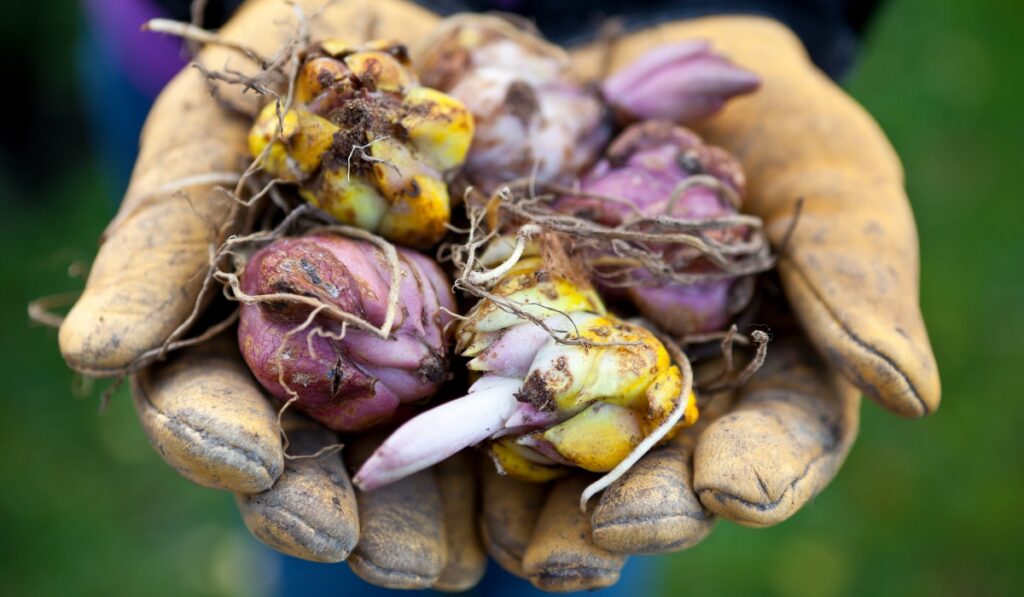
As summer’s heat begins to fade and the days grow shorter, September marks the perfect time to start planting for a vibrant spring garden in California. The mild temperatures and occasional rain showers create ideal conditions for seeds and young plants to establish strong roots before winter dormancy. At DK Landscaping, we’re passionate about helping you make the most of this planting season, ensuring your garden bursts with color and life come springtime.
Flowers to Plant in September
Embrace the anticipation of spring by planting these stunning flowers now:
- Bulbs: September is prime time for planting spring-blooming bulbs like tulips, daffodils, hyacinths, crocus, and anemones. These beauties will add pops of color and cheer to your garden as the days grow longer.
- Wildflowers: Consider sowing a wildflower mix for a naturalized and pollinator-friendly display. California poppies, lupines, and clarkias are excellent choices for a vibrant spring meadow.
- Cool-season annuals: Pansies, violas, primroses, and snapdragons thrive in the cooler temperatures of fall and winter, providing early color to your garden.
- Perennials: Fall is an ideal time to divide and transplant perennials or plant new ones. Consider options like columbine, coreopsis, and penstemon for long-lasting beauty.
Vegetables to Plant in September
Extend your harvest season and enjoy fresh produce throughout the fall and winter by planting these vegetables:
- Leafy Greens: Lettuce, spinach, kale, arugula, and Swiss chard thrive in the cooler temperatures of fall and winter.
- Brassicas: Broccoli, cauliflower, Brussels sprouts, and cabbage are perfect for fall planting, as they prefer milder conditions.
- Root Vegetables: Carrots, beets, radishes, and turnips can be sown in September for a late fall or winter harvest.
- Alliums: Plant garlic and shallots in September for a flavorful harvest next summer.
Shrubs to Plant in September
Add structure and year-round interest to your landscape by planting shrubs in the fall:
- Evergreen Shrubs: Ceanothus, manzanita, and toyon provide beautiful foliage and attract pollinators.
- Flowering Shrubs: Consider planting camellias, azaleas, and rhododendrons for stunning spring blooms.
- Fruiting Shrubs: Plant blueberries, raspberries, and currants in the fall for a delicious harvest next year.
Essential Tips for Successful Fall Planting
- Prepare Your Soil: Amend your soil with compost or other organic matter to improve drainage and fertility.
- Choose the Right Location: Consider each plant’s sun and shade requirements when choosing a planting spot.
- Water Wisely: Water deeply and less frequently, allowing the soil to dry out slightly between waterings.
- Protect from Pests: Monitor your plants for signs of pests and take preventative measures to protect them.
- Mulch: Apply a layer of mulch around your plants to conserve moisture, suppress weeds, and regulate soil temperature.
DK Landscaping: Your Partner in Fall Planting
At DK Landscaping, we understand the unique needs of California gardens. Our team of experts can guide you through the fall planting process, providing personalized recommendations and professional installation services to ensure your garden thrives.
Contact us today for a free consultation and let us help you create a stunning spring garden that will bring joy and beauty for years to come.
Remember, fall planting is an investment in the future of your landscape. By taking advantage of this ideal planting season, you can create a vibrant and flourishing garden that welcomes spring with open arms.
Sustainable Landscaping Practices for August: Thriving in California’s Dry Heat
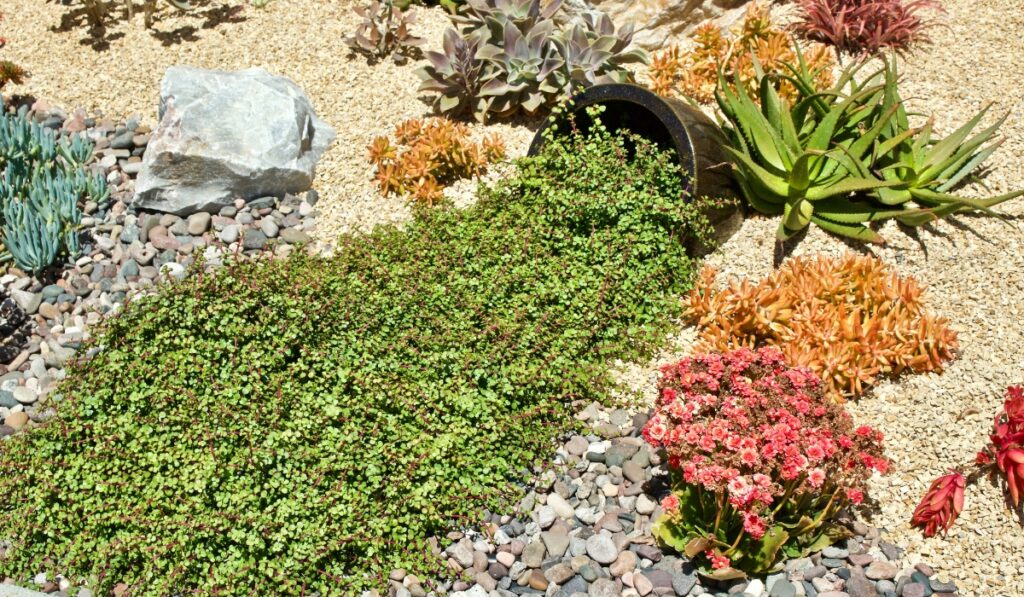
As Californians, we’re all too familiar with the challenges of August’s scorching temperatures and persistent drought conditions. While our landscapes may be feeling the heat, there are plenty of sustainable practices we can adopt to not only keep our gardens thriving but also nurture the environment. At DK Landscaping, we believe in creating beautiful landscapes that are in harmony with nature, and August is the perfect time to implement eco-friendly choices.
The Importance of Water Conservation
Water is a precious resource, especially during the peak of summer. Traditional landscaping practices often rely heavily on irrigation, putting a strain on our water supply. By embracing sustainable practices, we can significantly reduce our water consumption and help protect this vital resource.
Key Sustainable Landscaping Practices for August
Let’s delve into some essential eco-friendly choices you can make in your landscape this August:
1. Efficient Irrigation:
- Upgrade your irrigation system: Consider switching to drip irrigation or soaker hoses, which deliver water directly to the roots, minimizing evaporation and runoff.
- Water deeply and less frequently: This encourages deeper root growth and reduces water waste.
- Water in the early morning or late evening: Avoid watering during the hottest part of the day to prevent evaporation.
- Monitor soil moisture: Use a moisture meter to check soil moisture levels before watering.
- Adjust your irrigation schedule: As temperatures cool down in late August, gradually reduce watering frequency.
2. Mulching:
- Apply a thick layer of mulch: Mulch helps retain soil moisture, suppress weeds, and regulate soil temperature. Organic mulches like wood chips or shredded leaves also improve soil health as they decompose.
3. Drought-Tolerant Plants:
- Choose native and adapted plants: These plants are naturally suited to California’s climate and require less water.
- Group plants with similar water needs: This allows for more targeted and efficient irrigation.
- Consider replacing lawns with low-water alternatives: Opt for groundcovers, native grasses, or permeable hardscaping.
4. Rainwater Harvesting:
- Install rain barrels or cisterns: Collect rainwater from your roof to use for irrigation later.
- Create rain gardens: These shallow depressions capture and filter rainwater runoff, reducing erosion and providing habitat for wildlife.
5. Composting:
- Start a compost pile: Turn kitchen scraps and yard waste into nutrient-rich compost to improve soil health and reduce the need for synthetic fertilizers.
6. Organic Fertilizers:
- Use organic fertilizers and soil amendments: These products nourish your plants without harming the environment.
7. Reduce or Eliminate Pesticide Use:
- Embrace Integrated Pest Management (IPM): This approach focuses on prevention and natural controls to minimize pesticide use.
- Attract beneficial insects: Plant flowers that attract ladybugs, lacewings, and other insects that prey on pests.
DK Landscaping: Your Partner in Sustainable Landscaping
At DK Landscaping, we are committed to creating sustainable landscapes that are both beautiful and environmentally responsible. We can help you implement these eco-friendly practices and design a garden that thrives in California’s unique climate.
Contact us today to schedule a consultation and let us help you create a sustainable oasis.
Remember, every small step towards sustainability counts. By implementing these practices in your landscape, you can make a positive impact on the environment while enjoying a beautiful and thriving garden.
July Gardening Calendar for California: Your Guide to a Flourishing Summer Garden

July in California brings long, warm days and abundant sunshine, making it a prime time for gardening activities. Whether you’re a seasoned pro or just starting out, this July gardening calendar will guide you through the best planting schedules and essential tasks to keep your landscape thriving. At DK Landscaping, we’re committed to helping you achieve a beautiful and productive garden all year round.
Planting Schedule for July
Despite the heat, July is still a great time to plant several vegetables, herbs, and flowers in California. Consider these options:
- Vegetables:
- Warm-season vegetables: Tomatoes, peppers, eggplant, cucumbers, squash, beans, okra, melons
- Leafy greens: Lettuce, spinach, Swiss chard (plant in partial shade to prevent bolting)
- Root vegetables: Carrots, beets, radishes
- Herbs:
- Basil, cilantro, dill, parsley, rosemary, thyme
- Flowers:
- Sun-loving annuals: Zinnias, sunflowers, cosmos, marigolds, petunias
- Heat-tolerant perennials: Salvia, lantana, verbena, yarrow
Essential Gardening Tasks for July
In addition to planting, July requires attention to other essential gardening tasks:
- Watering: With rising temperatures, watering becomes crucial. Water deeply and less frequently, ideally in the early morning or late evening to minimize evaporation. Consider using drip irrigation or soaker hoses for efficient water delivery.
- Weeding: Stay on top of weed control to prevent them from competing with your plants for water and nutrients. Mulching can help suppress weed growth.
- Deadheading: Regularly remove spent flowers to encourage continuous blooming and prevent plants from going to seed.
- Fertilizing: Feed your plants with a balanced fertilizer to support their growth and flowering during the summer months.
- Pest and Disease Control: Monitor your plants for signs of pests and diseases. Take prompt action to address any issues before they spread.
- Harvesting: Enjoy the fruits of your labor by harvesting ripe vegetables, herbs, and flowers regularly.
Additional Tips for July Gardening in California
- Protect from Heat: Provide shade for delicate plants during the hottest part of the day. Consider using shade cloth or strategically placing plants near larger trees or structures.
- Conserve Water: Implement water-wise gardening practices like collecting rainwater, using mulch, and grouping plants with similar water needs.
- Prepare for Fall: Start planning for your fall garden by ordering seeds and preparing planting areas.
DK Landscaping is Here to Help
If you need assistance with any of these July gardening tasks or want to create a beautiful and thriving landscape, DK Landscaping is ready to lend a hand. Our team of experts can provide personalized advice, design services, and professional installation and maintenance to ensure your garden flourishes throughout the summer and beyond.
Contact us today for a free consultation and let us help you make the most of your July gardening endeavors.
Remember, gardening is a journey of continuous learning and adaptation. By following this July gardening calendar and staying proactive with your gardening tasks, you’ll be well on your way to enjoying a bountiful and beautiful summer landscape.
Drought-Tolerant Landscaping: Creating a Thriving Oasis in California’s Summer Sun

California’s summers are renowned for their sunshine, warmth, and unfortunately, their dryness. As water conservation becomes increasingly crucial, it’s time to rethink our landscaping choices and embrace the beauty of drought-tolerant designs. At DK Landscaping, we specialize in creating stunning, sustainable landscapes that flourish even in the harshest conditions.
The Importance of Water Conservation
With California facing ongoing drought conditions, responsible water use is paramount. Traditional lawns and water-hungry plants strain our precious resources and can lead to hefty water bills. By transitioning to drought-tolerant landscaping, we can significantly reduce our water consumption, create more sustainable environments, and still enjoy beautiful outdoor spaces.
Embracing the Beauty of Drought-Tolerant Plants
Drought-tolerant landscaping doesn’t mean sacrificing beauty or vibrancy. Many stunning plants thrive in arid conditions, offering a diverse palette of colors, textures, and forms. These plants have adapted to survive with minimal water, often boasting features like succulent leaves, deep roots, or silvery foliage that reflects sunlight.
Some popular drought-tolerant plants for California landscapes include:
- Succulents: Echeveria, Agave, Aloe
- Native Plants: California Poppy, Ceanothus, Manzanita
- Ornamental Grasses: Purple Fountain Grass, Blue Fescue, Feather Reed Grass
- Drought-Tolerant Shrubs: Lantana, Lavender, Rosemary
Designing Your Drought-Tolerant Landscape
Creating a successful drought-tolerant landscape involves careful planning and consideration of several factors:
- Soil: Improve soil drainage and water retention by adding organic matter like compost.
- Sun Exposure: Choose plants that are well-suited to your yard’s specific sun and shade conditions.
- Hydrozoning: Group plants with similar water needs together to optimize irrigation efficiency.
- Mulching: Apply a layer of mulch to conserve moisture, suppress weeds, and regulate soil temperature.
- Irrigation: Install a water-efficient irrigation system, such as drip irrigation, to deliver water directly to plant roots.
Beyond Plants: Creative Landscaping Ideas
Drought-tolerant landscaping goes beyond plant selection. Consider incorporating these elements into your design:
- Hardscaping: Use pavers, gravel, or decomposed granite to create patios, walkways, and other non-plant areas.
- Dry Creek Beds: Mimic natural drainage channels with decorative rock and gravel beds.
- Rain Gardens: Capture and filter rainwater runoff with strategically placed depressions filled with native plants.
- Water Features: Add a touch of tranquility with a small fountain or recirculating water feature.
DK Landscaping: Your Partner in Sustainable Design
At DK Landscaping, we are passionate about creating beautiful, water-wise landscapes that thrive in California’s climate. Our team of experts can guide you through every step of the process, from plant selection and design to installation and maintenance.
Let us help you transform your outdoor space into a sustainable oasis that conserves water, supports local ecosystems, and brings you joy for years to come. Contact us today for a free consultation!
Remember, drought-tolerant landscaping is an investment in the future of our environment and your outdoor living experience. Let’s work together to create a more sustainable and beautiful California.
Fire-Safe Landscaping: Protecting Your California Home and Property

Wildfires are an unfortunate reality for many Californians, particularly during the dry summer and fall months. While we can’t completely eliminate the risk, we can take proactive steps to protect our homes and properties through fire-safe landscaping. DK Landscaping is committed to helping you create a beautiful and resilient landscape that minimizes fire hazards.
Understanding Defensible Space
The concept of defensible space is crucial in fire-prone areas. It involves creating zones around your home where vegetation is managed to reduce the intensity and spread of fire. This gives firefighters a better chance to defend your property and potentially stop the fire’s advance.
Generally, there are three zones to consider:
- Zone 0 (0-5 feet from the home): This zone should be kept clear of all flammable materials, including plants, mulch, and debris. Hardscaping like gravel, concrete, or pavers is ideal here.
- Zone 1 (5-30 feet from the home): In this zone, focus on low-growing, fire-resistant plants with adequate spacing between them. Avoid highly flammable plants and keep trees pruned to reduce fuel ladders.
- Zone 2 (30-100 feet from the home): While less critical, this zone should still be managed to reduce fire intensity. Maintain healthy trees and shrubs, remove dead vegetation, and create fuel breaks if possible.
Fire-Resistant Plant Selection
Choosing the right plants is essential for fire-safe landscaping. Look for plants with the following characteristics:
- Low flammability: Select plants with high moisture content, low sap or resin production, and minimal deadwood accumulation.
- Drought tolerance: Plants that require less water are less likely to become dry and flammable during the hot summer months.
- Native species: Native plants are often well-adapted to the local climate and less prone to fire hazards.
Some examples of fire-resistant plants for California include:
- Trees: Coast Live Oak, California Sycamore, Western Redbud
- Shrubs: Toyon, Coffeeberry, Manzanita
- Groundcovers: Ice Plant, Lantana, Creeping Thyme
Maintenance Tips for Fire Safety
Regular maintenance is vital to keep your landscape fire-safe. Here are some essential tips:
- Irrigation: Water deeply and less frequently to encourage deep root growth and drought tolerance. Avoid overwatering, which can lead to lush growth and increased fire risk.
- Pruning: Regularly prune trees and shrubs to remove dead or diseased branches and maintain adequate spacing.
- Cleanup: Remove fallen leaves, branches, and other debris from your yard regularly.
- Mulch: Use fire-resistant mulch like gravel or decomposed granite, especially near your home.
Additional Fire Safety Considerations
- Roof and gutters: Keep your roof and gutters clean and free of debris. Embers can easily ignite dry leaves and pine needles.
- Vents: Cover vents with fine mesh screens to prevent embers from entering your home.
- Firewood: Store firewood at least 30 feet away from your home and other structures.
DK Landscaping Can Help
Creating a fire-safe landscape requires careful planning and execution. DK Landscaping has the expertise and experience to help you design and maintain a beautiful, resilient landscape that protects your home and property from wildfires.
Contact us today for a free consultation and let us help you create a fire-safe oasis.
Remember, fire safety is an ongoing process. By implementing these tips and partnering with DK Landscaping, you can significantly reduce the risk of wildfire damage and enjoy peace of mind year-round.


